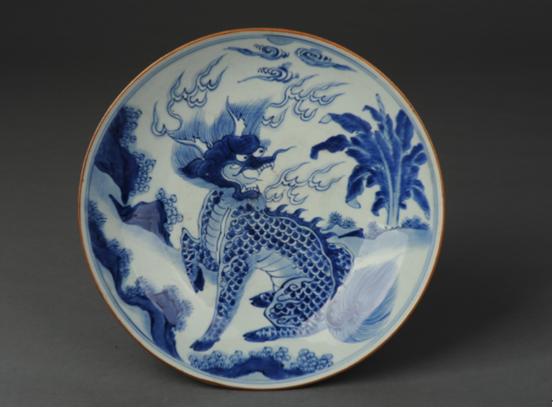As a part of the most positive meaning and content of traditional Chinese culture, auspiciousness is the eternal pursuit of our nation and contains the wisdom and emotions of the ages. The auspicious motif is the medium created by human beings in thousands of years of productive labor to convey the voice of the heart. The auspicious culture in Ming and Qing porcelain contains people's good wishes and expectations, giving people psychological hints through its artistic modeling and painting ornamentation, using the unique harmonic or allegorical function of Chinese characters, quyi implicitly expresses blessings and various appeals, forming the characteristics of "painting must be intentional, intentional must be auspicious". At the beginning of the New Year in 2022, the Jinan Municipal Museum specially held the "Ancient Porcelain Intentional auspiciousness and stopping - Collection of Ming and Qing Porcelain Auspicious Culture Exhibition", inviting you to walk into the world of porcelain painting that is full of spring and auspicious celebrations from all over the world, and taste the charm and style of ancient ceramic art in the mainland.
The Commentary on the Interpretation of the Text reads: "Qilin, Ren Beast, Elk Body, Oxtail, One Horn". Folk depict the unicorn as a sacred beast shaped like a dragon head, a deer body, a cow's hoof, and a ponytail, one of the four spirits, and in the Book of Poetry, it is called "the toe of lin, the prince of Zhenzhen, and the prince of Yu Linxi", which is a metaphor for the descendants of the royal family who know the book and do good deeds. In Chinese myths and legends, the unicorn is a benevolent beast, a symbol of auspiciousness, which can bring offspring to people. "Qilin sending a son" is the ancient people in the mainland who hoped for the prosperity of the family and prayed for Tianzi, and now it has become a Chinese custom of praying for children.

Regarding the origin of the "Qilin Sending Son", one of its explanations can be found in the Jin Wangjia's "Collecting Remains". According to legend, Confucius's father and his mother only had a son named Kong Mengpi, and they regretted that they were unable to perform ritual duties because of a foot disease, so the husband and wife went to Nishan to pray together. One night, a unicorn suddenly entered the room, behaved elegantly, spat out a side of the veil from his mouth, and stepped on the auspicious cloud with his back foot. The next day, the Confucius family gave birth to Confucius. Although this is a false theory, it has become the origin of the folk custom of praying for The Gifting of the Dragon with the "Kirin Sending Son". The "Qilin Tushu" picture painted with this is also mostly used for the decoration of the Temple of Literature and the Palace of Learning, which means that Xiangrui descended from prison and the sage was born. There are also many people who use "Qilin Er", "Lin Er" and "Lin Zi" to praise other people's children for being smart and intelligent.
"Qilin sending children" mostly appears in ceramics, New Year paintings, embroidery, woodcuts, lacquerware and other Chinese folk art works, the image of the Qilin appeared on porcelain began in the Yuan Dynasty blue and white porcelain, more as a beast of auspicious rui, expressing the meaning of wealth and prosperity. The real appearance of "Qilin Sending Son" and "Qilin Spit Book" began in the Qing Dynasty, and since then it has extended from blue and white porcelain to a variety of porcelain types such as five-colored, pastel, doucai, etc., and all kinds of folk kiln utensils have appeared widely, showing the universal demands and beautiful wishes of the ancient folk people. In the last years of the Ming Dynasty, political corruption triggered peasant uprisings, coupled with repeated invasions by Qing forces. External and internal troubles and frequent wars and chaos have caused the population of the whole country to decline sharply, the people are not happy, and famine is everywhere. It was not until the Kangxi period of the Qing Dynasty adopted a series of policies to restore people's livelihood and develop production, which gradually stabilized society, and population policies such as "breeding people" and "spreading out people into acres" greatly promoted population growth and economic development. The indiscriminate use of "Qilin Sending Son" porcelain in the Qing Dynasty is the product of this social background.
In the ceramic paintings with long artistic conception, profound meaning and interesting meaning, it leaves a vast space for unlimited reverie and artistic appreciation. As the saying goes: It is better to hear than to see, I hope you have the opportunity to visit the Jinan Museum in person, and come together to witness the unique style of "Ancient Porcelain Intentionally Auspicious Stop - Collection of Ming and Qing Porcelain Auspicious Culture Exhibition", and welcome the New Year in the millennium pattern!
Exhibition time: Spring Festival in 2022 - early June
Exhibition venue: Jinan City Museum on the first floor of the third exhibition hall
(Dazhong Daily client reporter Tian Kexin correspondent Yu Xiaozheng reported)